1) After the consolidation of dictatorial power but before the radicalization
of the late 1930s, three tendencies gave structure to Hitler's regime and
his position in it:
-
Perhaps the primary characteristic of this period was the increasing fragmentation
of power: the splintering of government and the Party into separate
and self-interested agencies with competing and overlapping jurisdictions,
each of them dependent to Hitler's individual will as Führer.
-
During these years as well, Hitler's racial and expansionist goals—present
in various forms from his earliest days of political activity—acquire sharper
focus than before.
-
At the same time, Hitler became both increasingly withdrawn from domestic
politics and intolerant of differing opinions, even coming from his
closest associates.
Finally, these were the years when Hitler's personal prestige expanded
to the point where his will could not be challenged—to a point, in other
words, where Hitler's will was absolute. |
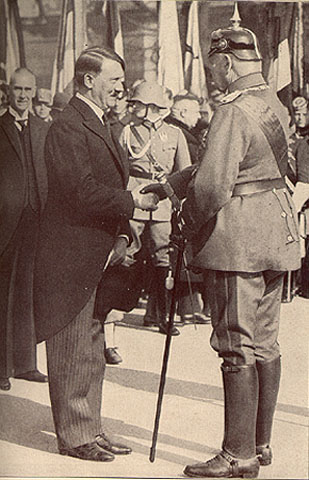
Image: from an unofficial pamphlet commemorating Hitler's
appointment as chancellor. In the rear stands the new Interior Minister,
Wilhelm Frick. The caption reads, "Hitler greets the President on Memorial
Day" (12 March 1933). Source: Wilhelm Köhler, Die nationale Revolution
in Deutschland: Ein Gedenkbuch in Bildern (Minden: Köhler,
1933); German Propaganda
Archive at Calvin College. |
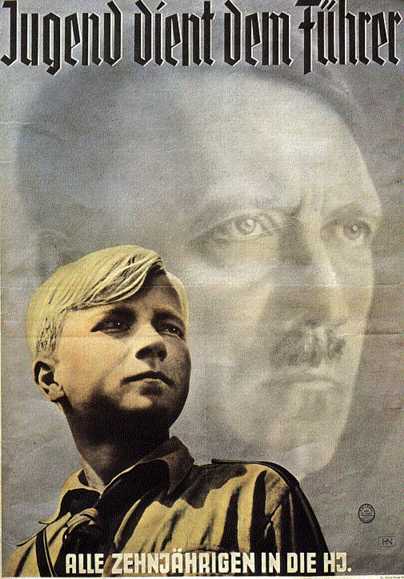
Image: "Youth Serves the Führer." Source: German
Propaganda Archive at Calvin College. |
2) These tendencies were interrelated. As Kershaw writes:
"Hitler's personal actions...were vital to the development.
But the decisive component was that unwittingly singled out in his speech
by Werner Willikens. Hitler's personalized form of rule invited radical
initiatives from below and offered such initiatives backing, so long as
they were in line with his broadly defined goals. This promoted ferocious
competition at all levels of the regime, among competing agencies, and
among individuals within those agencies. In the Darwinian jungle of the
Third Reich, the way to power and advancement was through anticipating
the 'Führer Will,' and, without waiting for directives, taking initiatives
to promote what were presumed to be Hitler's aims and wishes."
|
3) Hitler was, therefore, at one and the same time the absolutely indispensable
fulcrum of the entire regime, and yet largely detached from any formal
machinery of government. This enables us to explain Hitler's paradoxical
ability to remain aloof from much practical decision-making and to
increase his personal power in the process:
-
Through the dynamics of “working toward the Führer”, initiatives
were taken and policies adopted in ways that fell in line with Hitler's
aims, but without the dictator necessarily having to dictate.
|
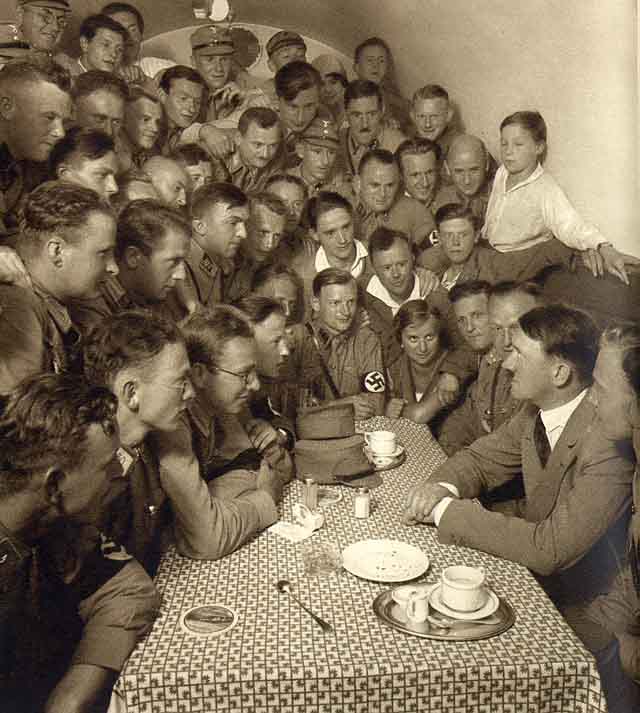
Image: from a pamphlet of photographs taken by Heinrich Hoffmann
entitled The Hitler No One Knows [Hitler wie ihn keiner kennt]
(Berlin: Zeitgeschichte Verlag, 1932). Source: German
Propaganda Archive at Calvin College. |
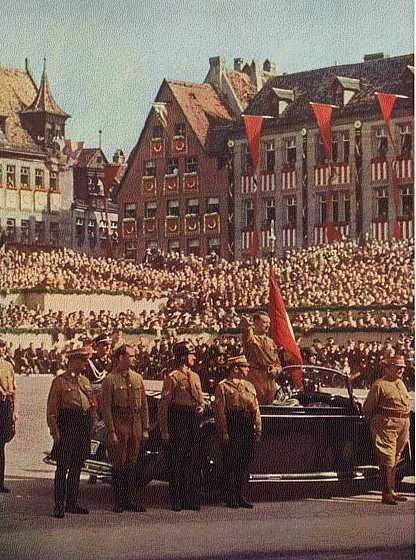
Hitler reviews a parade at the 1938 Party Rally at Nürnberg--the
last of its kind before the outbreak of war terminated the annual event.
Source: Hanns Kerrl, Reichstagung in Nürnberg 1938 (Berlin:
C. M. Weller, 1939), German
Propaganda Archive at Calvin College. |
4) The result, perhaps inevitably, was a high level of governmental
and administrative disorder. More ominously, competition encouraged the
continuous,
cumulative radicalization of policy in the direction of making
realities out of Hitler's own ideological obsessions. This process also
swelled Hitler's already immense ego, magnifying his already strong megalomaniac
tendencies, deepening his contempt for caution, even as his successes in
foreign and domestic policy made effective resistance to his regime less
and less viable. |
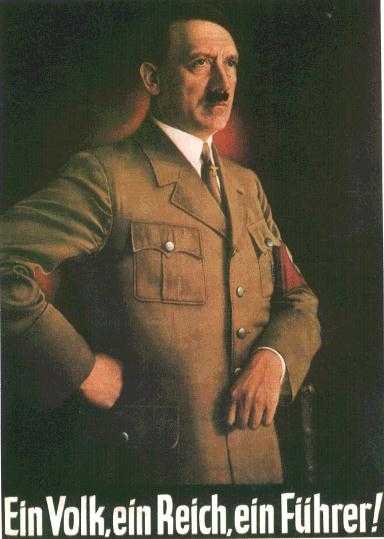 “Working
Toward the Führer”
“Working
Toward the Führer”



